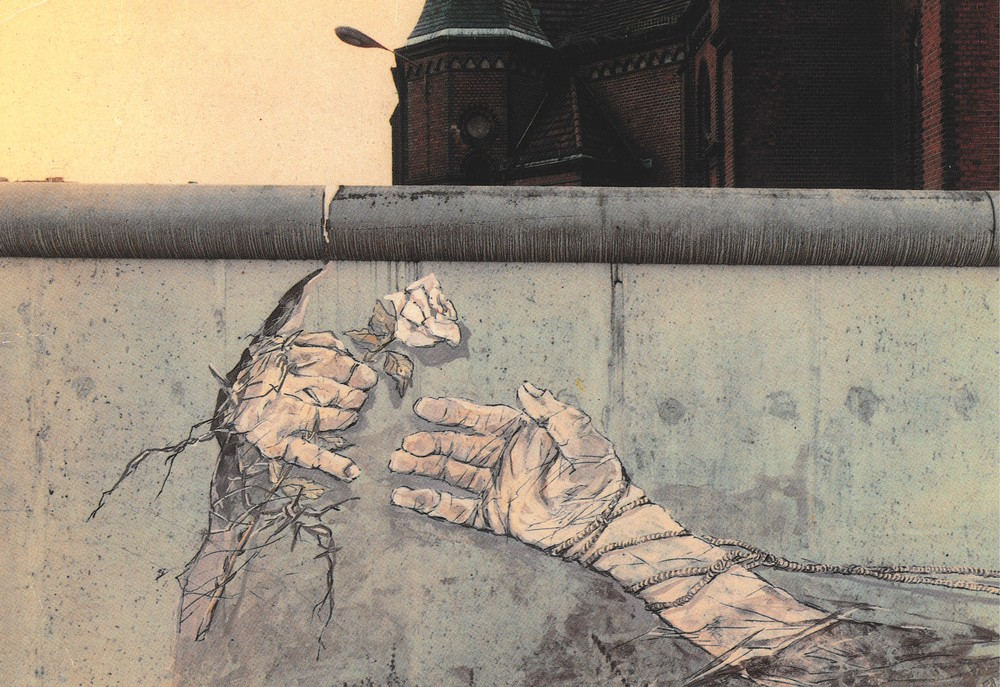Did we learn anything from the fall of the Berlin Wall? Thirty years later, we seem to have forgotten what can happen when ordinary people unite for human rights and democracy. They must be supported, especially those people standing up for their rights in Lebanon, Iraq and Sudan.
For 28 years, the Berlin Wall represented a divided Germany: capitalist West Germany and communist East Germany (the GDR). The 160-kilometer border through Germany´s largest city ensured that families and friends could not see each other. At least 200 people perished while attempting to cross the border. Most history books and articles tell a standard story about the fall of the Wall: the Soviet Union could no longer compete economically and militarily with the West. That is why Soviet leader Mikhail Gorbachev was forced to implement a policy of glasnost (transparency) and perestroika (reform). Together with US President Ronald Reagan, he decided to get rid of a new generation of nuclear weapons in Europe. Shortly thereafter, the Wall fell and the communist system collapsed.
People played major role
This story omits the central role that citizens played in the fall of the Wall. Throughout Europe, including communist countries, people protested en masse against the situation in which they found themselves. Citizens in communist countries demanded a system in which democracy and human rights were central. At the same time, the threat of the nuclear arms race in Western Europe caused massive protest. The fight against nuclear weapons was linked to the fight for human rights and democracy in the Warsaw Pact countries. This link was announced during the first major peace demonstration against nuclear weapons on November 21, 1981, in which more than 400,000 people participated. Without the global lobbying of civilians and peace organizations, we would very probably not have had the Intermediate-Range Nucler Forces (INF) treaty that curbed the number of nuclear weapons in Europe. (That same treaty, unfortunately, was recently allowed to expire.)
PAX has been working with critical citizens throughout Europe since the late 1970s. The independent groups with whom PAX worked were instrumental in mobilizing the masses in 1989 who demonstrated for the collapse of the communist system and who set in motion the fall of the Berlin Wall.
Lessons for the present
The role played by citizens who demonstrated and literally tore down the Berlin Wall with hammers and chisels is all too often forgotten. As if only leaders like Reagan and Gorbachev determine history.
The role of ordinary people is relevant again today in Lebanon, Sudan and Syria. Millions are fighting for democracy and human rights but are not supported by the international community. We continue to do business as usual with men in capitals, often with blood on their hands. Citizens do not get enough access to the negotiating table.
European values Berlin Wall
In an in-depth reflection and analysis, Europe expert and PAX colleague Dion van den Berg calls for citizens to be recognized as actors in processes of change. “We need to see what can happen if citizens unite for the cause of human rights and democracy,” says Van den Berg. “It is imperative to support and encourage these people. We cannot credibly speak about ‘European values’ ??of democracy and human rights if we sit idly by and allow those who stand up for these values to be harshly defeated.”
PAX on TV about the fall of the Wall
Dion van den Berg is appearing on a Dutch talk show on RTL 4 on Friday to discuss his personal experience, as a peace activist, of the fall of the Wall and the relevant lessons learned for the present. On Saturday, he speaks at an international conference in Budapest.
Read here the analysis by Dion van den Berg about the fall of the Wall.




